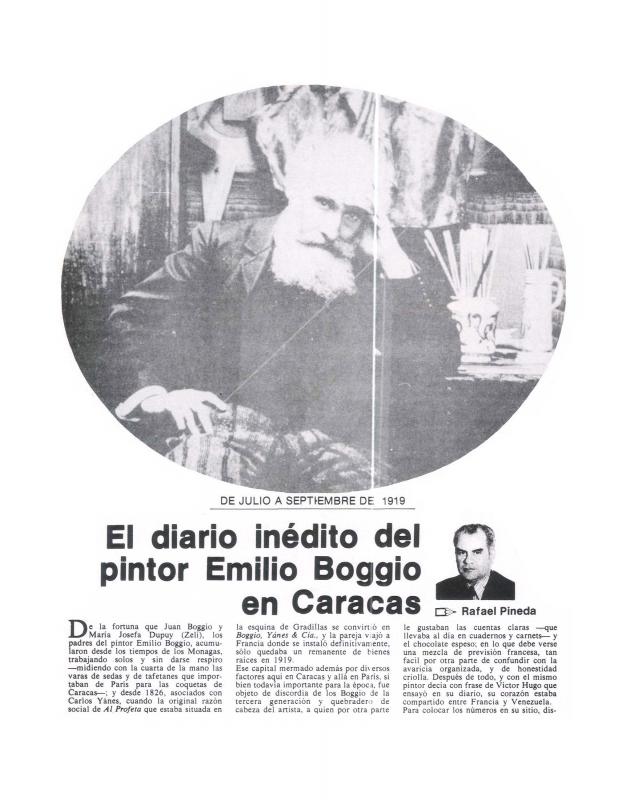The French critic and journalist Thiébault-Sisson wrote this article in connection with the retrospective exhibition of the Venezuelan artist (of French origin) Emilio Boggio (1857–1920), at the Galerie Georges Petit (Paris, 1925), five years after the artist’s death. This is an important document because it captures a moment when certain Parisian critics tried to revive the market for the work of Boggio. In the article, Thiébault-Sisson provides a context for his painting, his influences, and his artistic as well as geographic sources. The writer attempts to justify—probably to the collectors of that time—Boggio’s inconsistency in the market during the last period of his life. This was due to the artist’s adventurous spirit, and above all, to the disruption of the art world caused by World War I. The text makes an effort to acknowledge his achievements in the salons of French artists as well as covering his art training and personality.
Written in 1925, this article allows us to consider an aspect of great interest in Boggio’s art life: his relationship to the art market, with his dear friends (not just Henri Martin, but also with Georges Petit, and Thiébault-Sisson, himself) and finally, his lifestyle, which was a major factor in the pace of his artistic creation and the focus of his artistic explorations.
There is another reading of Boggio’s artwork written by the Mexican poet and diplomat José Juan Tablada; see “La exposición de Boggio” (1919) ICAA digital archive doc. no. 808640. In turn, Rafael Pineda investigates his return to Venezuela in “El diario inédito del pintor Emilio Boggio en Caracas (1919)” (doc. no. 1161700).


